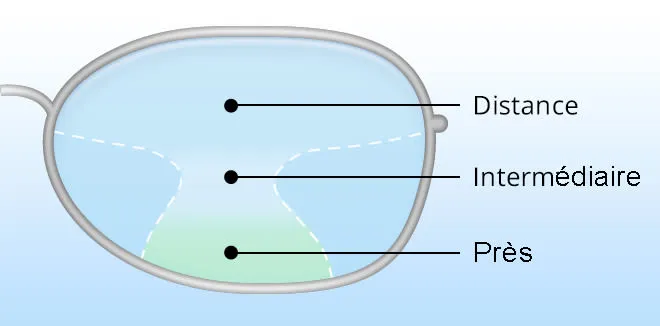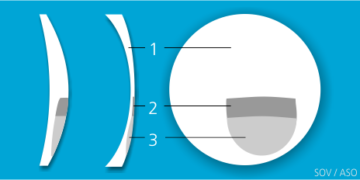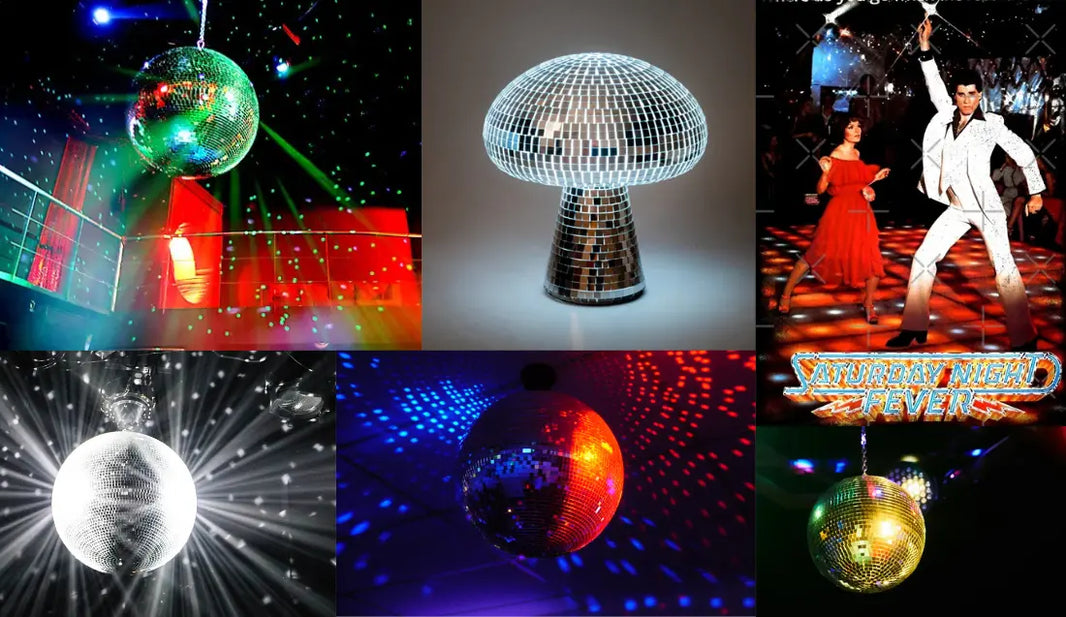Multifocal or progressive lens glasses? Confusion is often present when it comes to talking about these types of prescription glasses. Whether or not you are aware of the subtleties of this eye accessory, today we are going to see together what progressive glasses are as well as their difference from their multifocal counterparts.

What are progressive lenses?
Definition :
Progressive lenses are corrective lenses designed to correct presbyopia as well as other vision problems such as nearsightedness, farsightedness and astigmatism. They offer visual correction at several distances without a separation line, unlike traditional bifocal or trifocal lenses, which have visible separation lines.
Do you want to take advantage of the benefits of these versatile glasses? Discover Nooz multi-distance glasses now .

The main characteristics of progressive lenses:
-
Near vision zone: located in the lower part of the lens, this zone is used for reading or short distance activities.
-
Intermediate vision zone: placed in the center, this zone of the lens allows clear vision at medium distances, such as working on a computer, chatting with someone, looking at the dashboard of your car.
-
Far vision zone: located in the upper part of the lens, this zone is dedicated to distance vision, such as observing the road when driving or watching television.

The strong points of progressive lenses
-
A fluid transition: progressive lenses allow a gentler transition for the eyes between different viewing distances.
-
Aesthetics: They look like single-focal lenses because they don't have the distinct lines of bifocals or trifocals, which makes them more aesthetically pleasing.
-
Versatility: a single lens can correct several vision problems, which avoids having to change glasses for different tasks like with simple reading glasses, for example.
Disadvantages of progressive lenses
- Adaptation: For some people, progressive lenses can be difficult to get used to due to the need to move your head to find the right viewing angle.
- Cost: They are generally (much) more expensive than bifocals or single focus lenses.

Progressive lens glasses or multifocal glasses, what's the difference?
Great question! The terms "progressive lens glasses" and "multifocal glasses" are often used interchangeably... Because the two terms cover more or less the same thing. However, there are subtle distinctions between them!
Progressive lens glasses:
Progressive lens glasses are actually a specific type of multifocal glasses. As explained above, they correct a large number of defects present in multifocals. For example, they do not have a visible separation line. They also allow a smoother, more gradual transition between the different correction zones.
Enjoy absolute vision comfort now thanks to Nooz multi-distance glasses .
Multifocal glasses:
The term “multifocal” is a more general term that includes several types of corrective lenses (and can also include the progressive lenses discussed above).
In addition to progressive lenses, these types of lenses include:
Bifocal lenses:
-
Characteristics: They have two distinct correction zones, usually separated by a visible line. The upper part is for distance vision and the lower part is for near vision.
-
Advantages and disadvantages: Although less expensive and easier to adapt for some, they do not correct intermediate vision and the visible separation line can have an aesthetic impact.
Trifocal lenses:
-
Features: These lenses include three correction zones (far, intermediate and near) with two visible lines separating them.
-
Advantages and disadvantages: like bifocals, these lenses are easy to adapt, but on the other hand have clearly visible lines and may not offer as smooth a transition as progressive lenses.

Main differences
To summarize, the main differences between progressive lenses and other types of multifocal lenses lie in their design. Here are their main characteristics and differences:
-
Progressive lenses: smooth transition without visible lines, covering all depths of vision. No visible separation on the lenses; more aesthetic.
-
Other multifocal lenses (bifocal, trifocal): the separation is clear between the different corrections, presenting visible lines. These glasses are generally less expensive, but aesthetically less appreciated.
What are the prices of progressive lenses?
Progressive lenses are a bit of an improvement on traditional multifocal lenses. Their price is therefore generally higher, although this obviously depends on the quality of them as well as the brand.
Price estimate
-
Basic progressive lenses: around €150 to €300 for a pair of lenses. These lenses offer standard correction without additional options.
-
Mid-range progressive lenses: around €300 to €500 for a pair. These lenses often include anti-reflective and anti-scratch coatings.
-
High-end progressive lenses: around €500 to €800 or more for a pair. They typically include advanced technologies, high-quality materials and additional treatments (like photochromic or blue light coatings).
-
Frames: The cost of frames also varies and can range from €50 for basic frames to several hundred euros for designer brands.
Discover Nooz multi-distance glasses, the new benchmark progressive glasses
Enjoy now the comfort of clear vision up to 3 meters, without the adaptation difficulties specific to progressive lenses.
Equipped with variable correction on the top of the lens, the Nooz offers clear vision up to 3 meters, ideal for using computers, cooking or during meetings. The lower part of the glass ensures comfortable reading up close.
Discover the entire collection .
 Designed with a correction adapted to near vision, Nooz glasses allow much easier accommodation!
Designed with a correction adapted to near vision, Nooz glasses allow much easier accommodation!
The problems with standard reading glasses:
-
Lack of versatility
-
Blurred vision from 60cm
-
No mid-distance comfort.
Purchasable without a prescription, the brand new vision accessories from Nooz allow natural and easy accommodation thanks to a low reduction adapted to proximity.
Advantages :
-
The price: multi-distances offer an unbeatable price of 59 euros.
-
The brand: Nooz is a Belgian brand recognized for its inventiveness and the quality of its glasses
-
The innovation: lenses combining the versatility and aesthetics of progressive lenses, with a greater speed of adaptability than standard progressive lenses.
Enjoy absolute vision comfort now thanks to Nooz multi-distance glasses .

Conclusion
In this article we have seen that progressive lenses offer a versatile and aesthetic solution for those who suffer from presbyopia, allowing clear and uninterrupted vision at all distances. We hope that we have inspired you to take the plunge towards this practical and versatile solution. See you soon for new in-depth articles!








